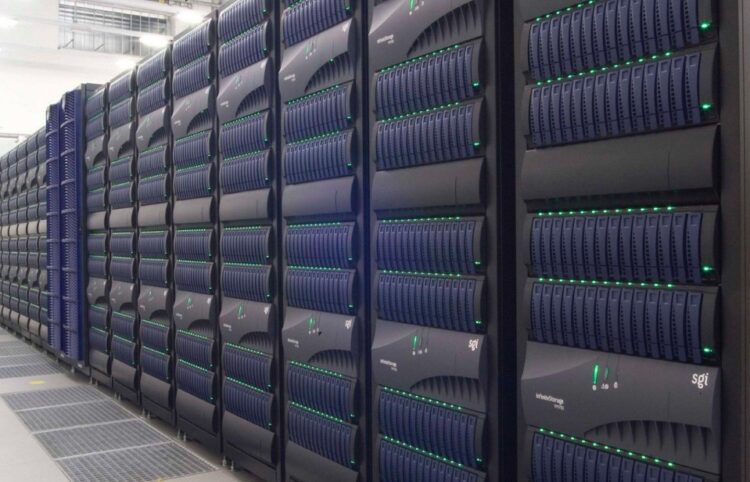It is crucial to choose the best RAID (Redundant Array of Independent Disks) level for your particular requirements because it might affect data throughput, availability, and system reliability as a whole. Data protection, capacity, and performance trade-offs are available with different RAID configurations.
It’s wise to take data loss due to drive failures or other unanticipated events into account when choosing the appropriate RAID level for your needs. Although RAID setups are made to offer redundancy and fault tolerance, data loss is still possible.
You could need RAID data recovery services in the event of a RAID failure. These specialized services use cutting-edge methods to recover lost data from faulty RAID arrays and are able to handle complex RAID configurations and data from RAID 0, RAID 1, RAID 5, RAID 6, RAID 10, and more can be recovered.
Stellar Data Recovery is a well-known name in the industry of data recovery services, as a reputable supplier of data recovery solutions, including RAID data recovery, Stellar has made a name for itself. They provide thorough services to recover data from RAID arrays that have experienced drive failures, controller problems, corruption, or unintentional formatting; their knowledge spans various RAID levels.
You May Find the Following Tips to Be Helpful

- Striped RAID, RAID 0 ─ By striping data over several disks, RAID 0 gives excellent performance but no redundancy. It is appropriate for speed-sensitive non-critical activities like video editing or gaming and additionally, It’s important to keep in mind, though, that if one disk fails, all data is lost.
- RAID 1 – Mirrored RAID ─ Data is duplicated over two drives in RAID 1, which offers great data redundancy. Applications that cannot afford to lose data, such as company databases or personal information, are a perfect fit for it. Since you’re essentially storing the same data twice, it’s not the most effective use of storage space.
- RAID 5 – Block-Level Striping with Distributed Parity ─ Block-Level Striping with Distributed Parity, or RAID 5, strikes a balance between performance and redundancy by combining striping and distributed parity. It is appropriate for small to medium-sized enterprises that want to maximize data protection and storage capacity. RAID 5 is more space-efficient than RAID 1 and offers data recovery in the event of a drive failure.
- RAID 6 – Block-Level Striping with Dual Parity ─ By offering dual parity, which allows it to tolerate the simultaneous failure of two disks, RAID 6 improves upon RAID 5. Due to its high level of redundancy, it is a fantastic option for businesses or organizations working with enormous datasets where data integrity is crucial. However, RAID 6 is less effective at storing data than RAID 5 because it needs a minimum of four drives.
- Hybrid RAID – RAID 10 (1+0) ─ RAID 10 (1+0) combines the advantages of RAID 1 and RAID 0. It provides strong redundancy through mirroring and high performance through striping. Because of this, it is appropriate for mission-critical applications in companies that demand both speed and data security. However, because it needs a minimum of four drives, with half of the total capacity being used for redundancy, it is the least space-efficient RAID level.
- RAID 50 – Combining RAID 5 Arrays ─ Data is striped across several RAID 5 arrays as part of RAID 50, which combines RAID 5 arrays. Businesses that require a balance between performance and redundancy should use this setup. Compared to RAID 5, it performs better, although more drives are needed. The failure of one drive in each RAID 5 array could result in data loss, hence RAID 50 must be carefully monitored and managed.
- Combining RAID 60 Arrays ─ RAID 60 is similar to RAID 50 but employs RAID 6 arrays rather than RAID 5 arrays. By permitting the failure of two drives in each RAID 6 array, improves fault tolerance and prevents data loss. Large-scale businesses dealing with massive amounts of crucial data are well-suited for RAID 60.
Considerations for Selection

- Data criticality ─ Your data’s significance is a key factor. Choose RAID levels with high redundancy, such as RAID 1, RAID 6, or RAID 10, if your data is mission-critical and any potential loss could have negative effects. Even if a drive fails, these configurations guarantee data availability and integrity.
- Performance needs ─ Carefully consider your performance needs. RAID 0 or RAID 10 are good contenders if getting the fastest read and write speeds is your top priority. For example, RAID 0 provides remarkable performance by stripping data across numerous drives, making it perfect for activities like gaming or video editing. RAID 10 offers speed and redundancy by combining the advantages of RAID 1 and RAID 0.
- Utilization of capacity ─ Take into account how effectively your chosen RAID level utilizes storage. Excellent redundancy is provided by RAID 1 and RAID 10, but at the expense of storage effectiveness because data is replicated. For those who need both space and redundancy, RAID 5 and RAID 6 are excellent since they strike a balance between the two.
- Number of disks ─ The number of disks you have will have an impact on your RAID selections. The fact that RAID 0 and RAID 1 may be set up with only two disks makes them ideal for smaller settings. RAID 6, RAID 10, RAID 50, and RAID 60 require more drives, which may affect both the cost and the quantity of storage that is available.
- Cost ─ Your RAID option is heavily influenced by your budget. Higher redundancy RAID systems sometimes call for more disks, which can be expensive to set up and maintain. When making your decision, take into account both the original expenditure and ongoing maintenance costs.
- Future expansion ─ Take into account how your storage needs could grow in the future. Make sure the RAID level you chose may be easily expanded or changed as your data storage requirements vary. RAID 5, RAID 6, and RAID 50 are a few examples of RAIDs that permit the addition of disks to expand storage capacity.

In conclusion, deciding on the appropriate RAID level depends on your individual requirements and priorities. Data criticality, performance, capacity, drive availability, cost, and future expansion should all be carefully taken into account because there is no one-size-fits-all solution. By adhering to these useful recommendations, you can make a well-informed choice that satisfies your needs and guarantees the availability and integrity of your data.
 Hi Boox Popular Magazine 2024
Hi Boox Popular Magazine 2024



